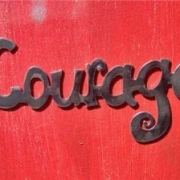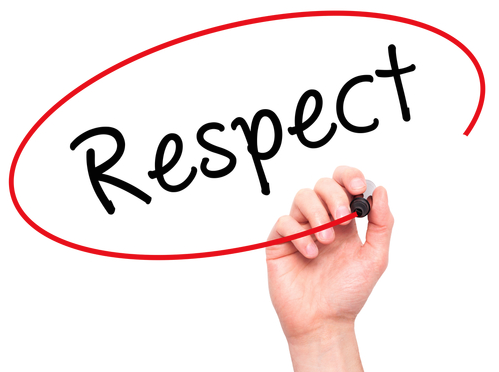AUTHENTIC LEADERSHIP Bringing Your Best Self to Work
The year was 1970. My dad was waiting in line in our town’s only hardware store to pay for a bag of nails. The wooden floors creaked. Musky smells surrounded us. We bought just about everything that we needed to run the farm, from binder twine to paint thinner to fence posts at that store.
I didn’t want to be seen with my father. I pretended not to know him as I stood to the side. He started his usual cheerful banter with the clerk, oblivious that people were lined up behind him.
My father had recently been discharged from a psychiatric facility where he had spent the past several weeks recovering from an episode of what was then called manic depression. The situation felt weird and strange but somehow normal and confusing. I was worried that he was going to start to get inappropriately excited again.
As a fourteen-year-old teenager, who was trying to figure himself out and not stand out, I snuck out the front door and climbed into our rusty old 1954 GMC pick-up. We never locked vehicles in those days.
When dad finally exited the store and got into the driver’s seat, I slunk low so I couldn’t be seen. Dad knew what was going on, but he never said anything. We quietly drove through town. I never sat up until we were out on the highway.
What I wish today is that I could have just one more ride home with my father in that old truck. But this time I would sit up high and proud beside him. I would tell him how much I admired his courage to face his illness and not be ashamed to be who he was. I’d tell him that my anger toward him was my way of saying that I was scared. I was scared that he wouldn’t come home from the hospital. I was scared that I’d be like him. And I would tell him how much I appreciated his acceptance of me that day. And I would tell him that I was sorry for judging his kindness as a weakness.
But that was beyond what my fourteen-year-old inarticulate, insecure self could do. I Iet embarrassment get in the way of knowing who I truly was – or who my dad was.
Whenever I tell this story, it amazes me how people immediately respond with their own stories. It never fails to happen. We all have experiences that can, if we are willing and create the space, become a gift we carry on our journey. The more we open up and share, the more authentic we become and the more relatable we are to others.
Being authentic is a way to bridge the barriers so prevalent in our world today. When we show who we truly are, what inspires us, what we believe in and care about, we connect with others. Indeed, if we are committed to making a difference, we have to truly see those we serve. And to fully see others, we must first allow others to see us.
Here are a few suggestions for leading authentically:
Be at peace with yourself. It’s been said that we don’t see the world as it is; we see the world as we are. We can’t give what we don’t have. Authentic leadership hinges on the understanding that who you are as a person and how comfortable you are with yourself is where you make your most valuable contribution. Being authentic doesn’t mean you fall apart when things get tough. In fact, quite the opposite. It means you are comfortable with who you are so you can be poised – clear, calm, and compassionate under pressure. Being comfortable with yourself is an endearing and compelling quality. The more present you can be for yourself, and the more peace you have with yourself, the more able you are to inspire and influence others.
Grant Grace. This week my friend, Dianne McConnell, invited me to the virtual launch of her wonderful book, “Could It Be Grace?” It is the story of her journey through the love and loss of two of her beautiful children. During the launch there were some technical and timing glitches but when we looked at each other through our screens, a sense of reverence, humanity, and lightness overcame the little anomalies. As face after face populated the screen of Dianne’s loving and supportive community, I instantly felt warmth and joy. Technology may have made the connection possible, but it was the emotions – authentic and palpable – that made it real and inviting. It was a moment of grace, which was most appropriate, given the title of the book. Whether we are on screens or on the phone or in-person, adapting to the post-pandemic reality, we are all stumbling forward together. Authenticity asks of us to bring our humanness and caring to everything we do. Let’s decide today to grant each other some much needed grace.
Stay humble. There’s a great story about Winston Churchill when he met with a flight sergeant being honored for bravery during World War II. The sergeant had the courage to climb onto the wing of his bomber plane at 13,000 feet to extinguish a fire in the starboard engine. But meeting Churchill in person scared this officer so much he couldn’t speak. Churchill noticed and said, “You must feel very humble and awkward in my presence.” The flight sergeant agreed. “Then you can imagine,” Churchill continued, “how humble and awkward I feel in yours.” Humility is a true evaluation of conditions as they are. It’s about embracing the humanity in us all. While we all have unique circumstances and make unique choices within these circumstances, no one is above another. Anyone who thinks that the letters or the titles behind their names or the size of their office makes them more important or more powerful than anyone else, is sorely misguided.
Authenticity means taking a risk to show others our true selves. It’s uncomfortable and carries with it the very human fear of not fitting in. But the greater risk is being inauthentic. The best part of being authentic is that you don’t have to maintain a front. You will please some and perturb others, and none of it will concern the truth of your being. And when you do your part to create an authentic workplace, it will be a place worth working in.









